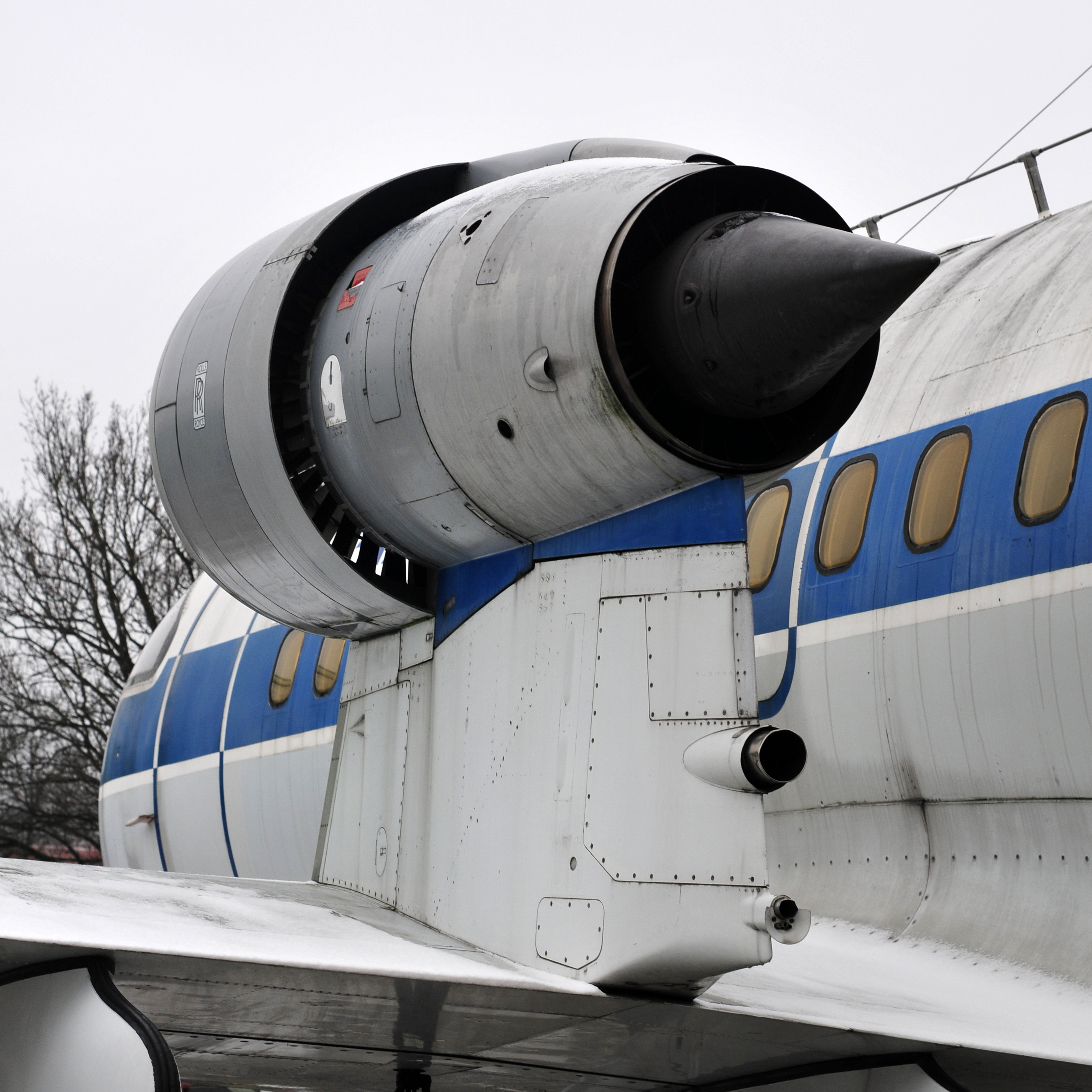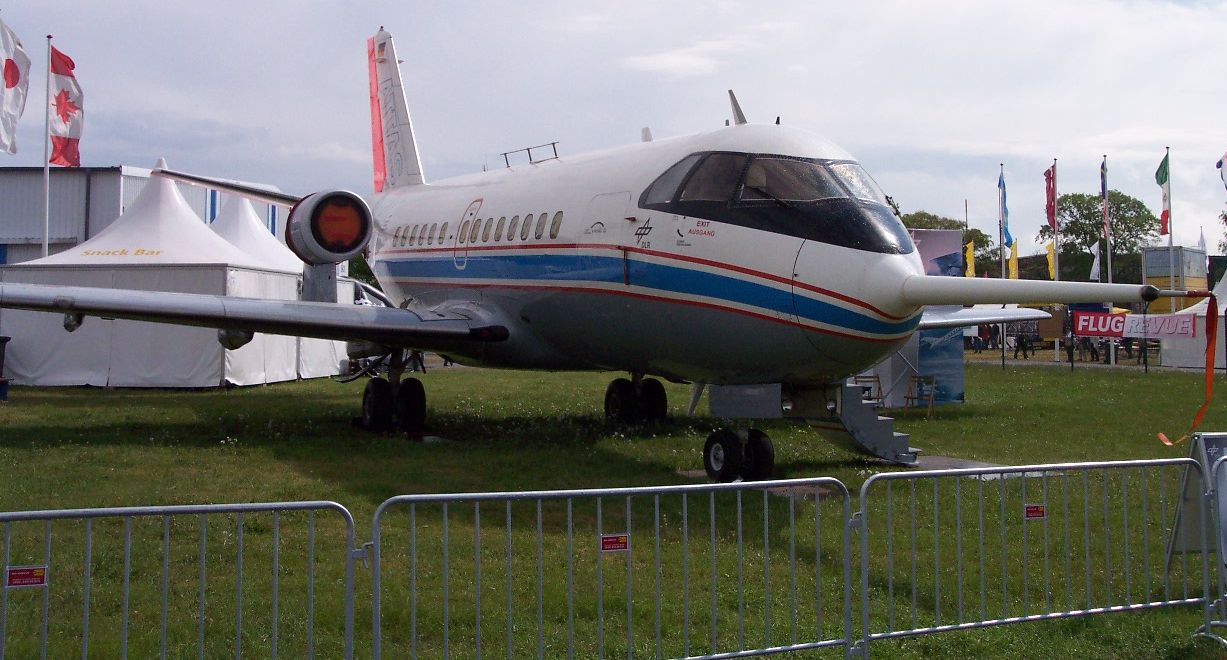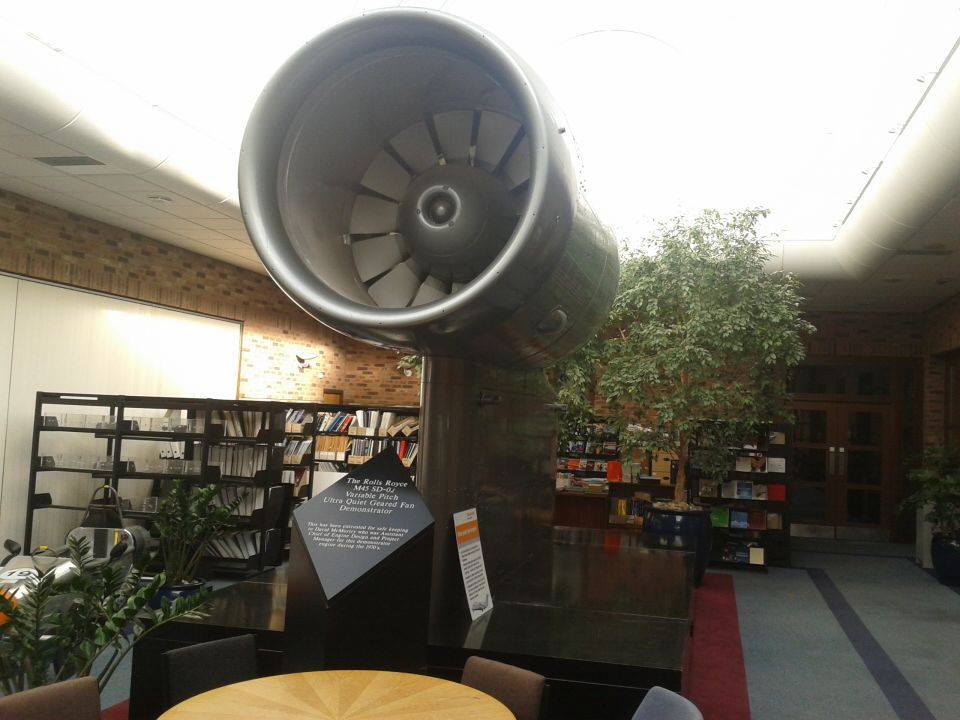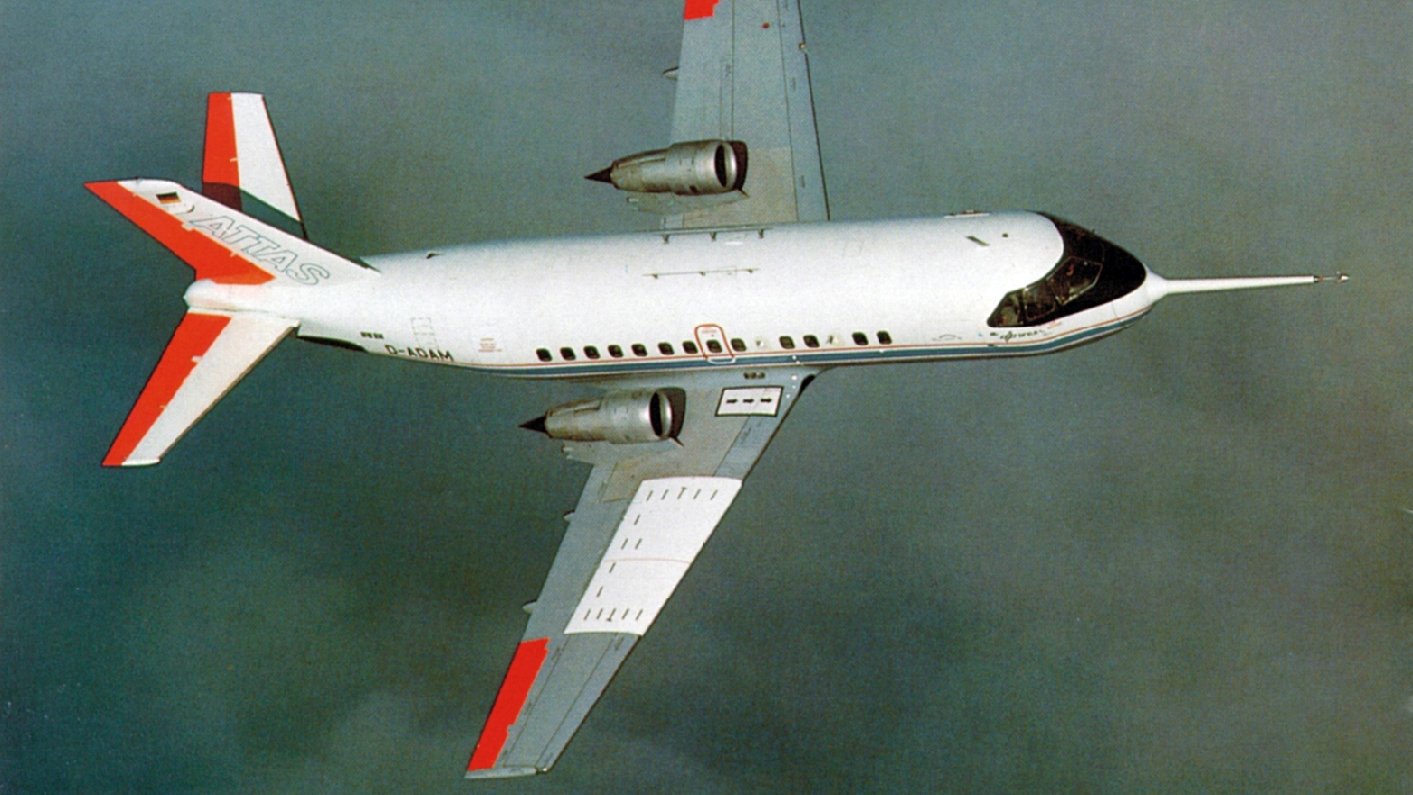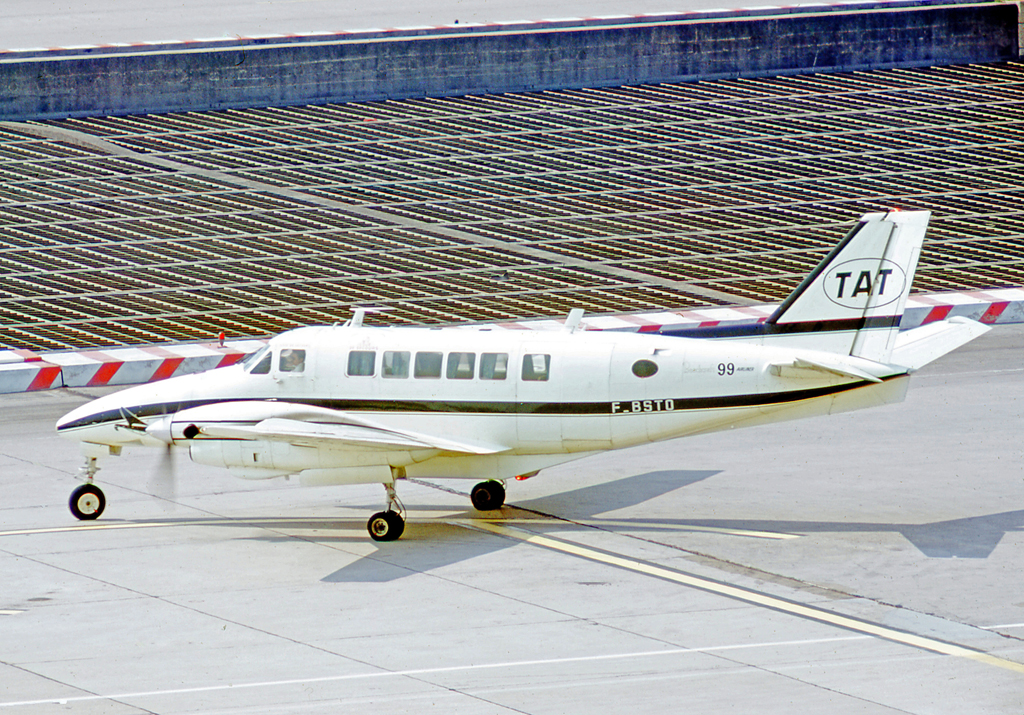|
VFW-614
The VFW-Fokker 614 (also VFW 614) was a twin-engined jetliner designed and constructed by West German aviation company VFW-Fokker. It is the first jet-powered passenger liner to be developed and produced in West Germany (the East German Baade 152 being the first German jet airliner), as well as the first German-built civil aircraft to have been manufactured for a decade.Mendenhall 2005, p. 326. The VFW 614 was originally proposed during the early 1960s as the E.614, which was a concept for a 36–40 seat aircraft by a consortium of West German aircraft companies, who were soon re-organised into Vereinigte Flugtechnische Werke (VFW). Originally intended as a Douglas DC-3 replacement, its most distinctive feature was that its engines were mounted in pods on pylons above the wing. The VFW 614 was produced in small numbers during the early- to mid-1970s by VFW-Fokker, a company resulting from a merger between VFW and the Dutch aircraft company Fokker. The program was cancelled in 197 ... [...More Info...] [...Related Items...] OR: [Wikipedia] [Google] [Baidu] |
VFW-Fokker
VFW-Fokker GmbH was a joint venture of Fokker and Vereinigte Flugtechnische Werke (VFW) started in 1969 that, from then on, controlled the ERNO initiative. The Entwicklungsring Nord (Northern development circle) — abbreviated ERNO — was a 1961 joint venture of Bremen-based Weserflug and Focke-Wulf with Hamburger Flugzeugbau to develop parts for rockets and get involved in space activities. In 1961 work began on a small, jet-powered transport aircraft initially styled Erno-61-4. After Weserflug and Focke Wulf formally merged into Vereinigte Flugtechnische Werke (VFW) in 1964, the machine was redesignated VFW 614. The draft design was amended to a STOL 40-44 passenger jet with overwing engines, for easier operation from unprepared runways. German government subsidies enabled development to start in earnest in 1966. The first prototype started in August 1968, but then VFW and Fokker of the Netherlands formed a joint transnational holding company. VFW-Fokker teamed with Republ ... [...More Info...] [...Related Items...] OR: [Wikipedia] [Google] [Baidu] |
Fokker VFW
VFW-Fokker GmbH was a joint venture of Fokker and Vereinigte Flugtechnische Werke (VFW) started in 1969 that, from then on, controlled the ERNO initiative. The Entwicklungsring Nord (Northern development circle) — abbreviated ERNO — was a 1961 joint venture of Bremen-based Weserflug and Focke-Wulf with Hamburger Flugzeugbau to develop parts for rockets and get involved in space activities. In 1961 work began on a small, jet-powered transport aircraft initially styled Erno-61-4. After Weserflug and Focke Wulf formally merged into Vereinigte Flugtechnische Werke (VFW) in 1964, the machine was redesignated VFW 614. The draft design was amended to a STOL 40-44 passenger jet with overwing engines, for easier operation from unprepared runways. German government subsidies enabled development to start in earnest in 1966. The first prototype started in August 1968, but then VFW and Fokker of the Netherlands formed a joint transnational holding company. VFW-Fokker teamed with Republ ... [...More Info...] [...Related Items...] OR: [Wikipedia] [Google] [Baidu] |
Rolls-Royce/SNECMA M45H
The Rolls-Royce/SNECMA M45H is an Anglo-French medium bypass ratio turbofan produced specifically for the twin-engined VFW-Fokker 614 aircraft in the early 1970s. The design was started as a collaborative effort between Bristol Siddeley and SNECMA. Design and development The VFW 614 was designed to operate over short sectors with up to a dozen flights a day. The engines were optimized for 30-minute sectors at a cruise altitude of 21,000 feet at Mach 0.65. Only a few minutes would be spent at the cruise rating and most of the flight would be at the higher climb rating or at a descent setting. The engine had a low turbine entry temperature and comparatively low rotational speed. The engine was designed to be uprated without drastic redesign. Three options were water injection (+10% thrust), improved HP turbine (+10% thrust), addition of a zero-stage to the LP compressor (+25% thrust). The M45H-01 was to have a thrust-specific fuel consumption (TSFC) of . The engine was devel ... [...More Info...] [...Related Items...] OR: [Wikipedia] [Google] [Baidu] |
Podded Engines
A podded engine is a jet engine that has been built up and integrated in its nacelle. This may be done in a podding facility as part of an aircraft assembly process. The nacelle contains the engine, engine mounts and parts which are required to run the engine in the aircraft, known as the EBU (Engine Build Up). The nacelle consists of an inlet, an exhaust nozzle and a cowling which opens for access to the engine accessories and external tubing. The exhaust nozzle may include a thrust reverser. The podded engine is a complete powerplant, or propulsion system, and is usually attached below the wing on large aircraft like commercial airliners or to the rear fuselage on smaller aircraft such as business jets. Engine Build Up The EBU components connect the engine systems with the aircraft systems. Engine build up includes installation of an engine starter, hydraulic pumps, electrical generators and firewire and components which connect the engine to the aircraft. They include the foll ... [...More Info...] [...Related Items...] OR: [Wikipedia] [Google] [Baidu] |
Vereinigte Flugtechnische Werke
Vereinigte Flugtechnische Werke (VFW) was a West German aerospace manufacturer. The company was formed by the 1964 merger of two German aerospace firms, Focke-Wulf and Weser Flugzeugbau GmbH (Weserflug). The formation of VFW was a natural outcome, as the two companies had been collaborating, along with Hamburger Flugzeugbau (HFB), in the rocket technology development alliance Entwicklungsring Nord (ERNO) group since 1961, the move was seen as a natural fit. Such collaborative efforts continued throughout VFW's operating years, not just through ERNO but also with the Dutch aircraft producer Fokker, who formed a joint venture with the firm, VFW-Fokker GmbH, during 1969 to promote. Collaboration with Fokker waned substantially over the years, having been greatly soured by the poor results of the VFW 614 programme, resulting in VFW-Fokker GmbH being wound up in 1980. During 1981, VFW was acquired by its domestic rival, Messerschmitt-Bölkow-Blohm (MBB), and was largely integrated ... [...More Info...] [...Related Items...] OR: [Wikipedia] [Google] [Baidu] |
Fokker
Fokker was a Dutch aircraft manufacturer named after its founder, Anthony Fokker. The company operated under several different names. It was founded in 1912 in Berlin, Germany, and became famous for its fighter aircraft in World War I. In 1919 the company moved its operations to the Netherlands. During its most successful period in the 1920s and 1930s, it dominated the civil aviation market. Fokker went into bankruptcy in 1996, and its operations were sold to competitors. History Fokker in Germany At age 20, while studying in Germany, Anthony Fokker built his initial aircraft, the ''Spin'' (Spider)—the first Dutch-built plane to fly in his home country. Taking advantage of better opportunities in Germany, he moved to Berlin, where in 1912, he founded his first company, Fokker Aeroplanbau, later moving to the Görries suburb just southwest of Schwerin (at ), where the current company was founded, as Fokker Aviatik GmbH, on 12 February 1912. World War I Fokker capitalized o ... [...More Info...] [...Related Items...] OR: [Wikipedia] [Google] [Baidu] |
Air Alsace
Société Air Alsace was an airline with its head office on the grounds of the Colmar-Houssen Aerodrome in Colmar, France. History Air Alsace began as an air taxi operation based in Colmar in 1962. It commenced operations using small aircraft. From 1974 it began to operate scheduled passenger regional services and on 1 January 1975 merged with Air Vosges and its fleet of Cessna 401 and Cessna 402. In cooperation with Air France it offered services to Amsterdam, Brussels, Cologne, Rome and Strasbourg. Flights to London Gatwick and Milan were later added. Air Alsace entered the jet age in April 1976 with the delivery of their first VFW 614 and it later acquired the Aerospatiale Corvette and the Fokker F.28 Fellowship. In 1981 the airline merged with TAT - Touraine Air Transport and Air Alpes to form TAT-Transport Aerien Transregional. Fleet : : * Aérospatiale Corvette * Cessna * Piper Navajo (''Air Alsace initially commenced services with two of these twin engine pisto ... [...More Info...] [...Related Items...] OR: [Wikipedia] [Google] [Baidu] |
Touraine Air Transport
Transport Aérien Transrégional was a French regional airline with its head office on the grounds of Tours Val de Loire Airport in Tours. It was formed in 1968 as Touraine Air Transport (TAT) by M. Marchais. Air France acquired a minority stake in the airline in 1989. Between 1993 and 1996 the company was gradually taken over by British Airways. It subsequently merged with Air Liberté. The merged entity was sold on to the SAir Group in 2001, which in turn merged Air Liberté with AOM becoming the renamed "Air Lib" continuing the heritage of TAT until the merged airline failed in 2003. History Touraine Air Transport commenced scheduled operations in 1968. The airline acquired its first Beech 99 Airliner twin-engined turboprop passenger airliner in June 1971 and used this type to commence French internal services. These aircraft remained in operation with TAT until 1975. During the 1970s TAT began building up a comprehensive network of regional, short-haul domestic and i ... [...More Info...] [...Related Items...] OR: [Wikipedia] [Google] [Baidu] |
Vertical Stabilizer
A vertical stabilizer or tail fin is the static part of the vertical tail of an aircraft. The term is commonly applied to the assembly of both this fixed surface and one or more movable rudders hinged to it. Their role is to provide control, stability and trim in yaw (also known as directional or weathercock stability). It is part of the aircraft empennage, specifically of its stabilizers. The vertical tail is typically mounted on top of the rear fuselage, with the horizontal stabilizers mounted on the side of the fuselage (a configuration termed "conventional tail"). Other configurations, such as T-tail or twin tail, are sometimes used instead. Vertical stabilizers have occasionally been used in motor sports, with for example in Le Mans Prototype racing. Function Principle The vertical tail of an aircraft typically consists of a fixed vertical stabilizer or fin on which a movable rudder is mounted. A trim tab may similarly be mounted on the rudder. Together, their role ... [...More Info...] [...Related Items...] OR: [Wikipedia] [Google] [Baidu] |
T-tail
A T-tail is an empennage configuration in which the tailplane is mounted to the top of the fin. The arrangement looks like the capital letter T, hence the name. The T-tail differs from the standard configuration in which the tailplane is mounted to the fuselage at the base of the fin. Advantages T-tails were common in early jet aircraft. Designers were worried that an engine failure would otherwise damage the horizontal tail. The T-tail is very common on aircraft with engines mounted in nacelles on a high-winged aircraft or on aircraft with the engines mounted on the rear of the fuselage, as it keeps the tail clear of the jet exhaust. Rear-mounting the engines keeps the wings clean and improves short-field performance. This was necessary in early jet aircraft with less powerful engines. T-tail aircraft can have better short-field performance, such as on the Avro RJ-85. The disturbed airflow over a lower stabilizer can make control more difficult at lower speeds. Dur ... [...More Info...] [...Related Items...] OR: [Wikipedia] [Google] [Baidu] |
Flying Magazine
''Flying'', sometimes styled ''FLYING'', is an aviation magazine published since 1927 and called Ziff Davis#Popular Aviation, ''Popular Aviation'' prior to 1942, as well as ''Aeronautics'' for a brief period. It is read by pilots, aircraft owners, aviation enthusiasts and aviation-oriented executives in business aviation, business, commercial aviation, commercial and general aviation, general aviation markets worldwide. It has the largest paid subscription, newsstand, and international circulation of any U.S.-based aviation magazine, according to its former publisher the Bonnier Corporation, and is promoted as "the world's most widely read aviation magazine". It is owned by digital media entrepreneur Craig Fuller. History The magazine first began publishing in 1927 as ''Popular Aviation'' soon after Charles Lindbergh's historic Charles Lindbergh#New York–Paris flight, transatlantic flight. It was given the name ''Aeronautics'' briefly from 1929–1930 and was changed back to ... [...More Info...] [...Related Items...] OR: [Wikipedia] [Google] [Baidu] |
Hamburger Flugzeugbau
''Hamburger Flugzeugbau'' (HFB) was an aircraft manufacturer, located primarily in the Finkenwerder quarter of Hamburg, Germany. Established in 1933 as an offshoot of Blohm & Voss shipbuilders, it later became an operating division within its parent company and was known as ''Abteilung Flugzeugbau der Schiffswerft Blohm & Voss'' from 1937 until it ceased operation at the end of World War II. In the postwar period it was revived as an independent company under its original name and subsequently joined several consortia before being merged to form Messerschmitt-Bölkow-Blohm (MBB). It participates in the present day Airbus and European aerospace programs. History In 1933 the Blohm & Voss shipbuilding company in Hamburg was suffering a financial crisis from lack of work. Its owners, brothers Rudolf and Walther Blohm, decided to diversify into aircraft manufacture, believing that there would soon be a market for all-metal, long-range flying boats, especially with the German state airli ... [...More Info...] [...Related Items...] OR: [Wikipedia] [Google] [Baidu] |
